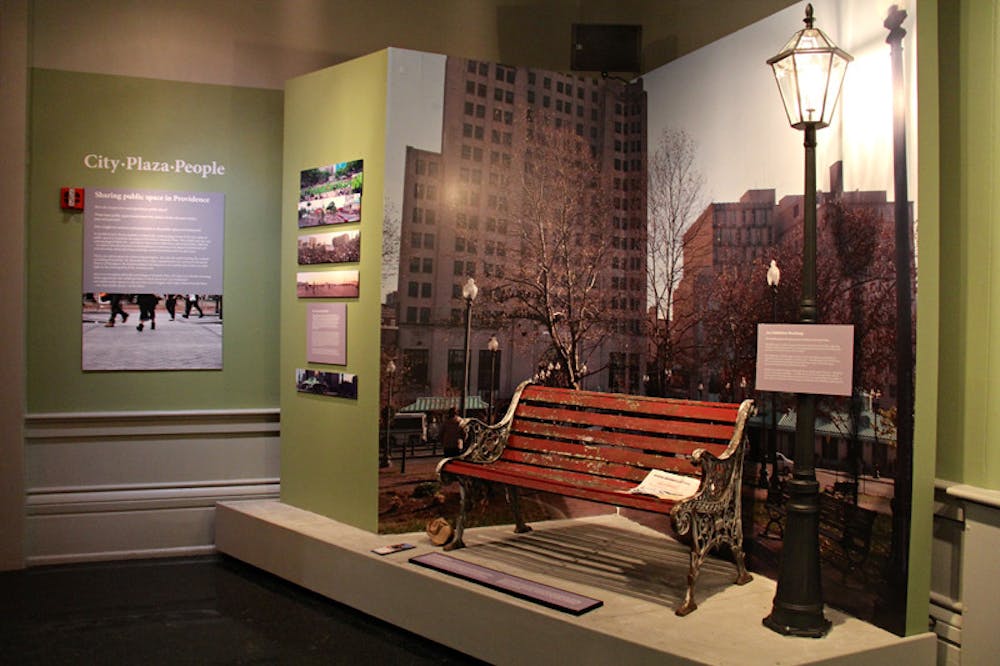“City Plaza People,” an exhibit currently featured at the Haffenreffer Museum of Anthropology, brings the hustle and bustle of downtown Providence to the Main Green. The sight of buses rolling to a stop and people milling about greets visitors, thanks to a projector running footage taken at Kennedy Plaza on one of the museum’s main walls.
The exhibit is the brainchild of Rebecca Carter, postdoctoral fellow in anthropology and professor of last semester’s ANTH 1236: “Urban Life: Anthropology in and of the City.” Instead of assigning a traditional paper, Carter used the exhibit as the final project for the class. The Haffenreffer has a long history of partnering with students and faculty members to put together exhibits using artifacts from the museum’s collection, said Chief Curator Kevin Smith.
But this exhibit uses only student-gathered research, a move that Smith described as controversial. “I advocated for this project despite, and because, it was different,” Smith said.
A typical journey through the exhibit begins with the video footage described. Next, a brief look at famous city squares throughout the world gives global context to the plaza. In the following section, the viewer learns about the history of the plaza, which originally functioned as a train station and has since served as an important civic forum, once as the venue for a speech given by President John F. Kennedy.
The exhibit also showcases a collection of past and present plans for the plaza.
“We went into this with the question of who is involved in planning public space,” said Aaron Reyes ’13, who worked with other students to put the section together.
A wall covered in photos of people who use the plaza illustrates the public space’s human aspect, and a sound station allows visitors to listen to student-conducted interviews with the people photographed. Pictures of people holding up signs describing their hopes and wishes for the plaza cover the exhibit’s final wall. The pictures range from a disgruntled-looking woman whose sign reads “more bathrooms” to one of a beaming young man who wants “basketball courts.” While many of the signs suggest a widespread desire for more bathrooms, others advocate for a safer, more commercial plaza where people might congregate for reasons other than taking the bus.
Finally, visitors are asked to write down their own wishes for the plaza, an idea Carter said was proposed by the students. “The idea is to get people to think about and understand how they connect with and dwell within public places,” she added.
“City Plaza People” will be on display through March 31.

ADVERTISEMENT




